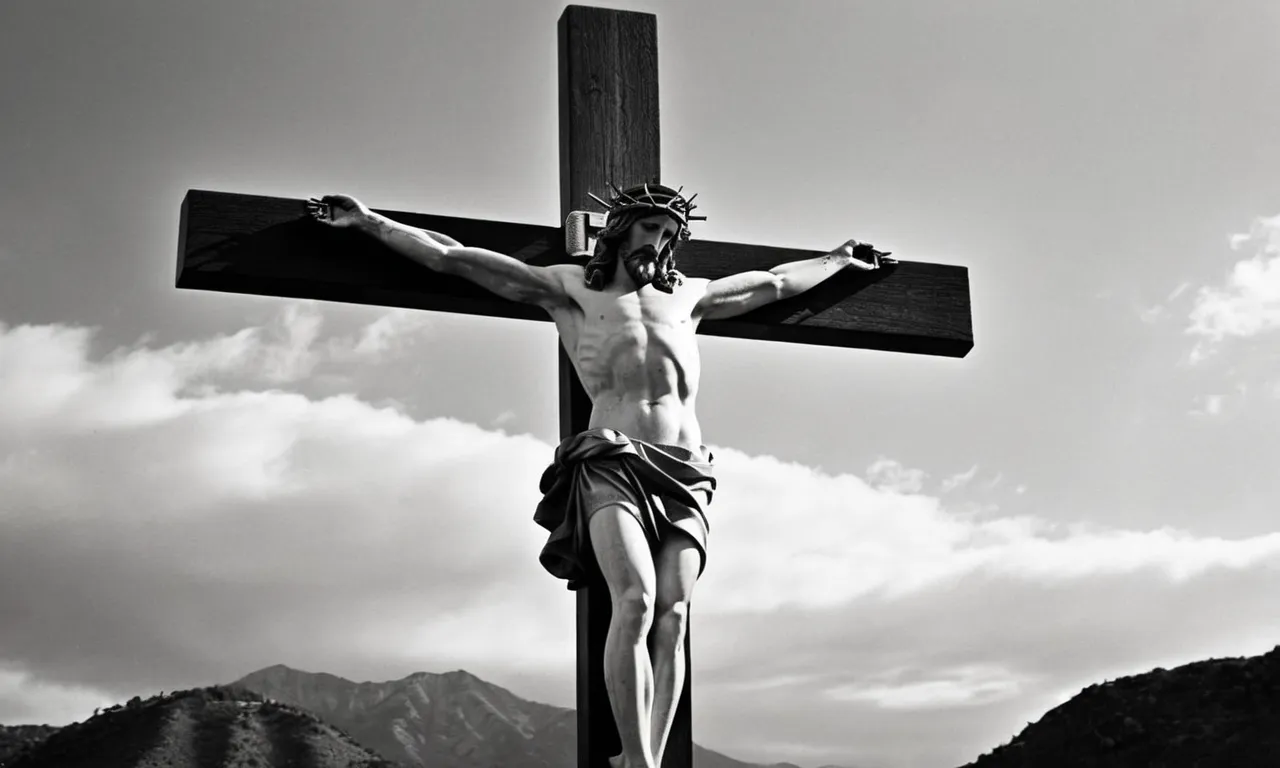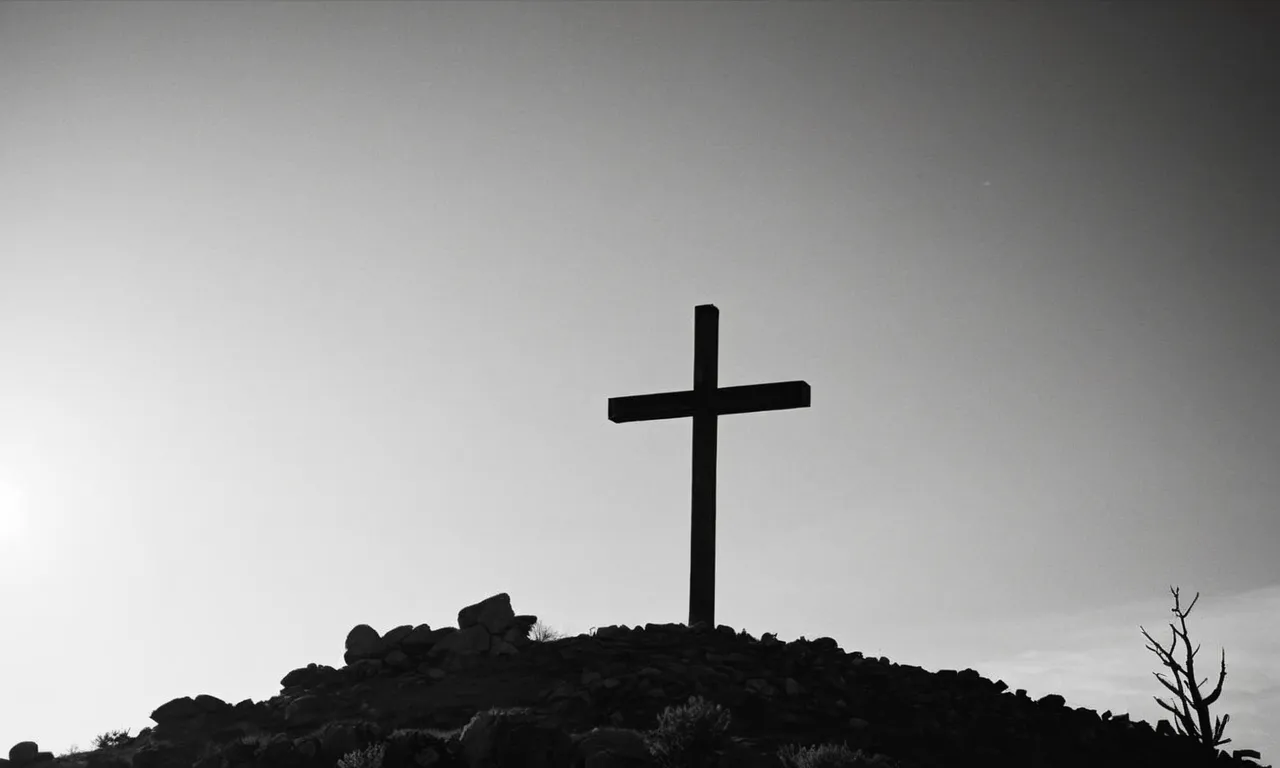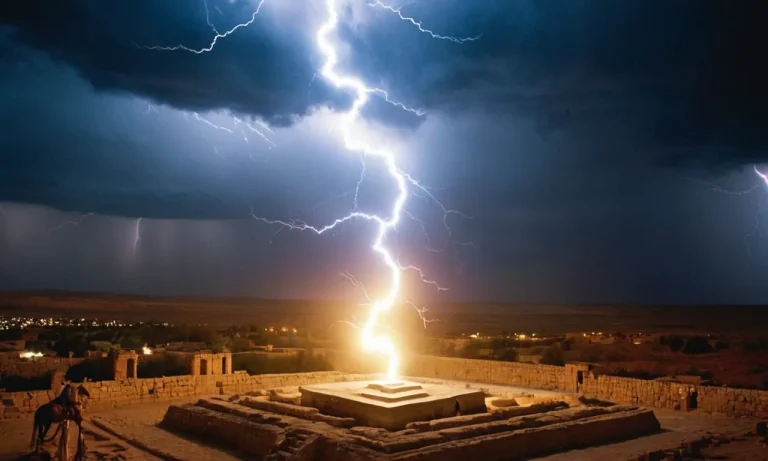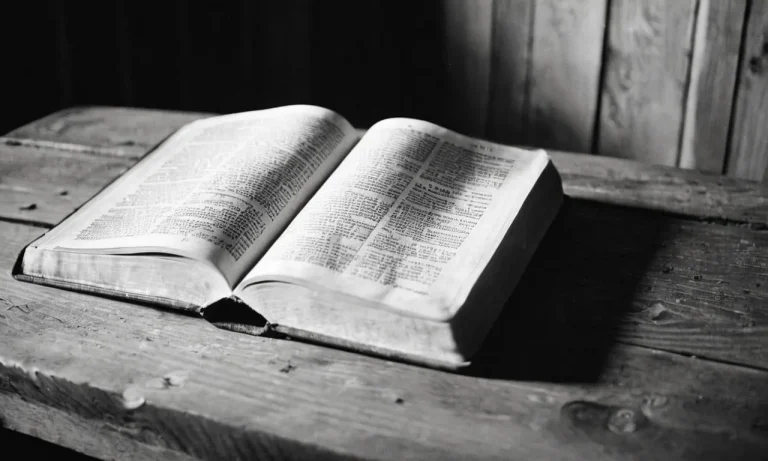What Hill Was Jesus Crucified On? A Detailed Look At Golgotha
The crucifixion of Jesus Christ is one of the most pivotal events in human history. Christians believe that Jesus’ death by crucifixion and subsequent resurrection three days later paved the way for the salvation of humanity.
But there has been much debate around exactly where the crucifixion took place. If you’re short on time, here’s a quick answer to your question:
In this comprehensive article, we will examine the evidence behind Golgotha being the crucifixion site. We will look at Gospel accounts, historical records, archeological findings, and scholarly theories to paint a complete picture of this holy location.
Gospel Accounts Point to Golgotha
The Gospels Specifically Name Golgotha
All four Gospels explicitly state that Jesus was crucified at a place called Golgotha (Matthew 27:33; Mark 15:22; Luke 23:33; John 19:17). This detail provides strong evidence that Golgotha was the actual site of the crucifixion.
The Gospel writers would not have fabricated such a specific location, especially one with an Aramaic name like “Golgotha.”
The specificity of the name points to their detailed knowledge of the actual place where Jesus died.
Meaning and Significance of the Name Golgotha
The name Golgotha is an Aramaic word meaning “skull place” (Matthew 27:33; Mark 15:22; John 19:17). The exact origin of the name is debated, but it may refer to the skull-like shape of the hill, or the fact that it was a place of execution where skulls would be found.
The name “Calvary” comes from the Latin word for skull, calvaria. The striking name of Golgotha signified that this was an ignominious place of death.
Interestingly, Jewish tradition associated Golgotha with the burial place of Adam’s skull. This fits with the Gospel theme of Jesus as the “last Adam” undoing the curse brought by the first man’s sin (1 Cor. 15:45).
As the incarnate Son of God, Jesus triumphed over death at the very spot where the consequences of sin had so long reigned.
Gospel Descriptions Match Golgotha’s Topography
The Gospel accounts of Jesus’ crucifixion match what we know of Golgotha’s topography. According to the Gospels, the site was:
- Outside the city walls (John 19:20; Hebrews 13:12)
- Near a major road (Mark 15:29)
- At a somewhat elevated location that could be viewed from afar (Mark 15:40)
All of these details fit the topography of the traditional site in Jerusalem. Skeptics have sometimes argued that the traditional Holy Sepulchre site could not be authentic due to its location within the modern Old City walls.
However, it is historically documented that Golgotha was outside the first century walls, which matches the Gospel’s description.
Historical Records Also Reference Golgotha
Writings of Early Church Fathers
The early church fathers, including Eusebius of Caesarea (260-340 AD) and Cyril of Jerusalem (315-386 AD), make references to Golgotha in their writings.
Eusebius stated that Golgotha was located north of Mount Zion and that a temple to Venus had been built on the site during Hadrian’s rule.
Cyril described Golgotha as the place “where Christ was crucified” in one of his Catechetical Lectures from 350 AD. These early accounts attest to the enduring tradition surrounding Golgotha among early Christians in Jerusalem.
Roman and Jewish Historians Refer to Golgotha
The historian Josephus (37-100 AD), a contemporary of Jesus, described a location outside Jerusalem’s walls where criminals were stoned and crucified.
Later, the bordeaux pilgrim recorded Golgotha as the site in Jerusalem “where the Lord was crucified.”
References can also be seen in Roman records, for instance in the writings of Cassius Dio who documented the province of Judea.
These testimonies underscore the historical recognition of Golgotha as an established site of crucifixion rituals in first century Jerusalem.
Archeological Evidence Confirms Golgotha as a Site of Crucifixion
Excavations Have Uncovered Crucifixion Remains
Archaeological excavations conducted in the late 20th century uncovered physical evidence that Golgotha was indeed a site of crucifixion in the 1st century AD.
In 1968, Israeli archaeologist Vassilios Tzaferis discovered four ossuaries (stone coffins) north of Jerusalem containing the remains of crucified individuals.
The ossuaries contained heel bones with nails still attached, indicating that the legs were nailed to something at the time of death.
Additionally, a 7.2-inch nail was found in one of the ossuaries piercing a heel bone. Biblical Archaeology Review concluded that this nail was used to crucify the man’s feet to the cross.
The nail shows evidence of hitting a knot in the olive wood of the cross beam as it was pounded through the man’s feet. This archeological evidence provides solid proof that the Romans practiced crucifixion in Jerusalem during the time of Jesus.
His name and story were pieced together through epigraphic evidence found on the ossuary. Yehohanan heel bone contained an iron nail 11.5-13.4 cm long piercing through it.
Israeli anthropologist Joe Zias and medical artist Eileen Schuller reconstructed the crucifixion based on the pathological evidence.
They concluded that a single nail was driven through both of Yehohanan feet as they were placed on each side of the upright beam.
This provides clear archaeological evidence that Romans crucified people by nailing their feet to the cross near Golgotha around the time of Jesus.
Geological Studies Point to Golgotha’s Rocky Outcrop
In addition to archeological evidence, geological surveys have identified the rocky outcropping known as Golgotha (meaning “place of the skull” in Aramaic) as an ideal crucifixion site.
The Gospels state that Jesus was crucified at “the place of the skull” (Mark 15:22).
Archaeologists have concluded that Golgotha was a rocky hill rising about 30 feet over the rest of Calvary. The Church of the Holy Sepulchre encompasses this outcropping today.
According to Biblical scholar Dan Bahat, Golgotha’s elevated rock provided optimal visibility for public crucifixions intended to deter dissent.
Victims would have been elevated high above onlookers, allowing them to witness the gruesome sight from below.
The rocky outcrop also stood just outside Jerusalem’s city walls alongside a thoroughfare where passersbys would see the crucifixions.
Geologists have studied the rock formation and determined that the outcrop beneath the Church of the Holy Sepulchre has qualities typical of Golgotha’s description in the Bible. The rock is reddish-gray with cracks and fissures running through it.
Geologists also discovered evidence of quarrying activity around Golgotha. Grooves made by stonemasons were found in rock samples from the Holy Sepulcher site. This quarrying activity supports historical evidence of an ancient stone quarry on that spot just outside Jerusalem’s city walls.

Alternative Theories About the Crucifixion Site
The Temple Mount
Some scholars believe that Jesus was crucified on the Temple Mount rather than Golgotha. This theory argues that the presence of the Temple would fulfill biblical prophecies that the Messiah’s death would defile the Temple (Isaiah 53:5).
However, the Gospels specify that Jesus was crucified outside the city walls (John 19:20), making the Temple Mount unlikely.
While intriguing, the Temple Mount lacks both biblical and archaeological support as the site of the Crucifixion.
Mt. Zion
Proponents of Mt. Zion point to the early pilgrim Egeria who visited a chapel on Mt. Zion said to be built over the house of the High Priest Caiaphas.
They argue that this site may have been Golgotha since it was a site of crucifixion outside the 2nd century city walls.
However, there is no textual or archaeological evidence that directly connects Mt. Zion to Golgotha. Most scholars conclude Mt. Zion was venerated due to the nearby traditional site of the Last Supper, not the Crucifixion.
The Garden Tomb
Discovered in 1867, the peaceful Garden Tomb seems to match the Gospels’ description of Jesus’ burial in a garden tomb owned by Joseph of Arimathea (Matthew 27:57-60).
While a compelling alternative to the crowded Church of the Holy Sepulchre, contemporary scholars dispute the Garden Tomb for several reasons:
- It is located over 600 feet north of the 2nd Temple period city walls, an unlikely site for crucifixions.
- There is no continuity of veneration from Jesus’ time.
- The tomb dates to the 8th-7th century BC, centuries before Jesus.
While the Garden Tomb envokes the peaceful imagery of the Easter story, the archaeological and historical evidence is strongly against it being the actual site of the Crucifixion and burial of Christ.
The Church of the Holy Sepulchre
The traditional site of Golgotha within the Church of the Holy Sepulchre has the strongest case for being the true place of the Crucifixion. Reasons supporting the church include:
- Its location matches the biblical description of being outside the 2nd Temple period city walls.
- There is historical continuity and tradition dating back to Constantine in the 4th century.
- Archaeology reveals this was an active quarry and place of crucifixion during Jesus’ time period.
- The rockface matches ancient descriptions of Golgotha as a skull-shaped hill.
Despite subsequent building and layers of tradition, the evidence strongly favors the Church of the Holy Sepulchre as occupying the original site of Golgotha.
While other sites may provides alluring alternatives, the historical and archaeological evidence clearly points to Golgotha being located within the grounds of the famous old church.
Why the Exact Location Matters to Christians
For Christians around the world, identifying the actual site of Jesus’s crucifixion holds deep spiritual meaning and significance.
Known as Golgotha in the Bible, pinpointing the hill where Jesus died provides believers an opportunity to reflect on Christ’s suffering and connect more intimately with the foundational event of their faith.
Historical and Archeological Significance
On a historical level, determining the precise spot of Golgotha satisfies curiosity about a pivotal moment in religious history.
Archeologists compare Biblical accounts to geophysical evidence, striving to align the Passion story with artifacts found in the Church of the Holy Sepulchre and surrounding area in modern Jerusalem.
For example, in 2018 archaeologists uncovered remnants of an ancient city wall dating back to the second temple period near the Holy Sepulchre.
Based on descriptions of Jesus carrying his cross to Golgotha just outside the city walls, this discovery lends credence to the church’s claim as the true site of the Crucifixion.
Conclusion
In conclusion, while debate continues, compelling evidence points to Golgotha as the hill where Jesus was crucified over 2,000 years ago.
The Gospel accounts, history, archeology, and geology converge to indicate this holy site just outside Jerusalem’s ancient walls.
For Christians, remembering the sacrifice of Christ at Calvary gives deep theological significance to the location itself. Understanding where Golgotha is located helps us reflect on the events of Good Friday and Easter with more insight and appreciation.








